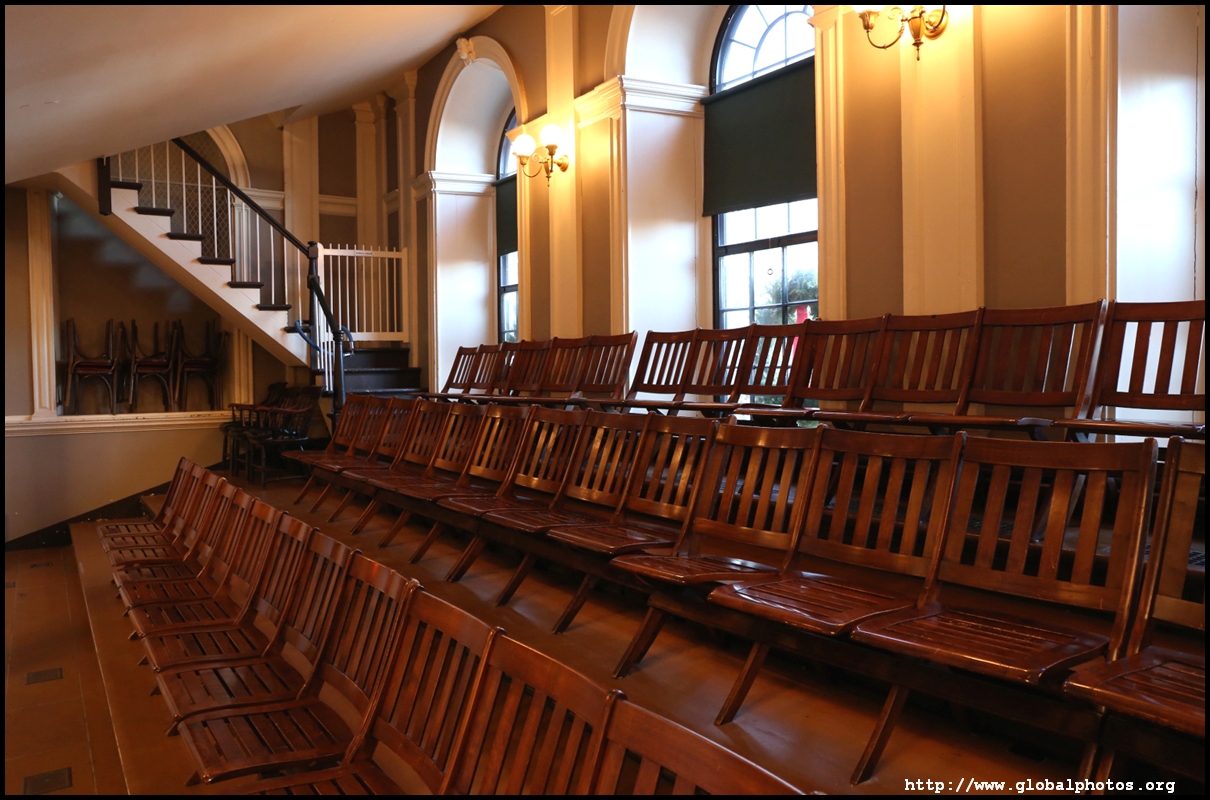Boston Photo Gallery - Freedom Trail
With a very obvious red line running on the pavement, Boston's 2.5 mile Freedom Trail connects many of downtown's historic sights dating from the 17th-19th centuries into a manageable walking tour.Peter Faneuil inherited his uncle's fortune and sought to leave a legacy to the public by funding a permanent central market. A meeting hall was added over it and Faneuil Hall was completed in 1742. Here in 1764, the Americans first protested against colonial taxation policies as they paid dues but had no representation in the British Parliament. After independence, the hall continued to be the "cradle of liberty" during the 1800s with protests, conventions, speeches and more held here.
Across from it is Quincy Market, which was built as Faneuil Hall could no longer meet the city's needs, with wooden sheds set up around it. The mayor led the way with construction starting in 1825, and the new market opened a year later.
Built in 1713, the Old State House is the oldest surviving public building in the city. There was a merchants' exchange on the first floor while the colonial government's offices were upstairs, including the governor's. On the balcony overlooking the public square, Bostonians heard royal proclamations and also the Declaration of Independence for the first time.
Just a short walk away, the Old South Meeting House was built in 1729 as a place of worship. On the night of Dec 16, 1773, some 5000 angry colonists gathered here to protest a tax on tea, and when negotiations failed, it resulted in the Boston Tea Party.
The Park Street Church sits on what was Boston's town granary. Built in 1810, William Lloyd Garrison started his slavery abolition campaign here in 1829.
King's Chapel was built in the mid 18th century for the Anglican community. It was inspired by contemporary churches in London and is a classic example of Georgian architecture. The burial ground next door is home to John Winthrop, the colony's first governor.
|
To re-use these photos, please notify me by email : asiaglobe@yahoo.com.hk.






























